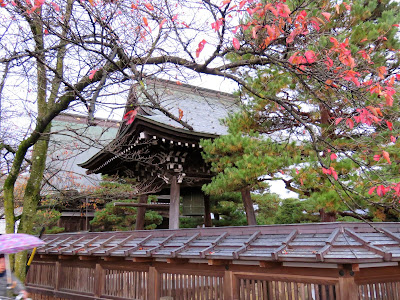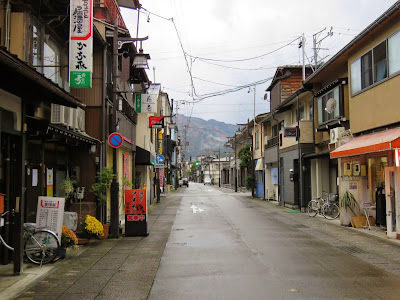
Hida Furukawa (古川) which means An Old River, is a pleasant little historical town situated by riverside in the mountains of Gifu Prefecture. It is 125 km away from Nagoya and takes only 15-20 minutes train ride from Takayama City. The town is famous for its carps-filled canal and the Spring Festival held in 19th and 20th of each April, features huge elaborately decorated floats and hundred naked young men wrapping with only loincloths parade a giant drum through streets, led by thousand of people with lanterns.



Furukawa is the choice of place for one to getting off the beaten track. It is much quiet and a less crowded place than Takayama City, easily navigate on foot or bicycle. Besides its Takumikau woodwork museums, candle shop, the three Shin Buddhist Temples (Enkouji, Honkouji and Shinsouji) formed part of its attraction.


Honkouji Temple measured at 25 meter in length at four sides that built with cypress timber, is the largest wooden building in Hida region. The fencing walls were contributed by female workers during Meiji era. The glorious front gate and intricate carvings display the exquisite woodwork art of Hida. The building was burnt down in 1904 fire and restored. Honkouji temple follows the practice of Jodo Shinshu, a different lineage of Pureland Buddhism.


Enkouji Temple dated from year 1667, features for water calling turtle at both ridges which was said to have protected the temple from Furukawa 1904 fire. The Temple also practices the teaching of Jodo Shinshu Buddhism which was founded in early 1200s by a former Tendai monk Rev. Shinran (1173-1263). To commemorate the virtue of Rev Shinran who established The True Pureland Religion, that has been widely practiced by Japan Buddhists, Santera Mairi was held annually on January 15th in Furukawa, when people visit the three temples, place the snow candle statue standing on the main street for a line of two meters long and lit up thousand of candles at Seto River. The religious ceremony has become a winter tradition to Furukawa.


It was said that in 19th century, young ladies usually pay homage to the three temples at the end of December. They dressed up and visited the temples after came home from work at a thread factory. The praying timing turned into an opportunity for males to look for their love and many succeeded and ended up in marriage at that time.


The Town of Furukawa was once a prosperous place in Edo era, because of its rich timber resources in the surrounding region. Today, I hardly see a person walking on the streets. Its charming town-scape attracts not so much attention from the busy world.


Furukawa was established about 400 years ago as a base of a castle town, when the only flat castle of Hida, Masushima Castle was built in year 1589. The traditional urban architecture style of Hida still remains and preserved with row of beautiful wooden houses built with an arm-elbow wood at the roof eaves and crowned it as Cloud marking the work of a master carpenter. It is quite pleasurable to stroll through its old streets under a calming atmosphere with no bustling disturbances. But on the other hand, we are a bit worry for its 18,000 inhabitants. Can they survive well without any contribution of tourism?



The 35 buildings with walls plastered in white, lined at the bank of Setagawa River Bank are the storehouses of old sake breweries.



The white walled store houses of sake breweries and old private homes near Setogawa River have shaped up the most picturesque street of Furukawa.


The sake brewery storehouses had a history of more than 300 years.


Seto River that runs through streets of Furukawa was named after its builder, Genbei Setoya. It is a home to 800 carps. They have been stocked inside the flow since 1968. The swimming carps are the property of all local residents. They donated the fish to purify the river water that had been seriously polluted due to city development.



The 800 carp inhabitants of Seto River are not always staying in the canal. They are moved out in winter and returned only in Spring season.



Setogawa River was originally designed to direct the excess water from the moat of Masushima Castle to irrigate the rice fields and also served as a boundary between Samurai district with common people. The canal was vital for daily life until 1950s but today it serves only as a source of water to extinguish fire and to sprinkle pavements for cooling purposes.



The drain covers are designed with pictures of carps swimming in Seto River.



Furukawa is famous for Hoba-miso, a local style of making the soya bean paste with Hoba leaf. Another item is its Kanboshi Daikon, radish that has been hanged open air to repeatedly dried and frozen by natural elements.



No comments:
Post a Comment